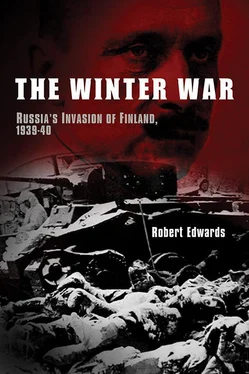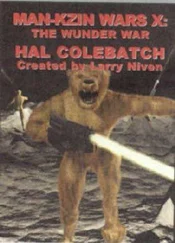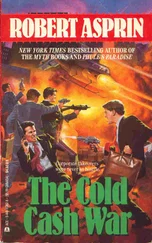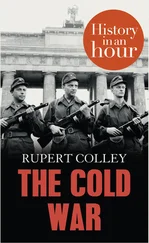Timoshenko offensive
Finnish forces 237-8
objectives 238-9
planning 240-2
artillery barrage 242, 245, 249
demonstration operations 245-6
tanks 245-6
assault of 11 February 249-51
‘Poppius’ bunker 250
‘Million’bunker 250
flanking movement 252-3
Finnish air cover 253
Allied response 255-6
withdrawal to the V-line 256-8
Finnish command changes 262-3
Viipuri cut off 264-5
Finnish Commander-in-Chief’s report 266-7
Finnish collapse likely 268
ceasefire 271
Tolvajärvi, battle of 178-85
Tolvajärvi, Lake 180
Trainin, Captain 120
Tribune, the 211
Trotsky, Leon 97
Tukhachevski, Mikhail Nikolayovich 24-5, 61, 95, 96, 189, 204-5, 228, 241
Tuominen, Arvo 43, 45-6, 114-5
Tuompo, General 155, 174
Turku 14
Tvardovski, Alexander 250
United States of America 15, 45, 88-90, 143-4, 235, 247-9
Urbšys, Juozas 71
Vasilevski, General 267
Vazhenvaara 159
Veltjens, Josef 282
Vereker, Gordon 255-6, 259-60, 268
Vian, Captain Philip 252
Viipuri (Vyborg) 14, 29, 120, 239, 253, 262, 264-5
Viipuri gateway, assault on 192-6
Viljanen, Lieutenant Colonel Kaarlo 187
Vinogradov, Commander (Second Rank) A. 157, 159, 162, 165, 167-8, 209
Voionmaa, Väinö 265
Volkdeutsche , the 71
volunteer forces 218, 233-5
Voroshilov, Kliment 24, 58, 95, 96-7, 241
Vuonanlahti, Lake 160-1
Walden, General Rudolf 123, 265
Wallenius, General Kurt 174, 262-3
weather, effects of 165-7, 172
Webb, Beatrice 69, 130
Wedgwood, Colonel Josiah 277
Wehrmacht, the 61
Weid, Prince Viktor zu 219
Weihl, Emil 133
Weizsäcker, Carl von 263
Weygand, General Maxime 207
Wigforss, Ernest 82
Wuolijoki, Hella (nee Ella Murrik) 42, 44, 209, 210
Yakovlev, Commander (Second Rank) 113, 125, 172
Yanov, Battalion Commander 193-5
Yartsev, Boris 38-42, 47-9, 50, 211
Yrjö-Koskinen, Baron Aarno 72, 74, 105-6, 136
Zelentsev, Commander 153, 160
Zhdanov, Andrei 83, 93-4, 96, 98, 241, 267
Zhukov, Georgi 16, 97
Pegasus Books LLC
80 Broad Street, 5 thFloor
New York, NY 10004
Copyright © 2008 by Robert Edwards
All rights reserved under International and Pan-American Copyright Conventions. By payment of the required fees, you have been granted the non-exclusive, non-transferable right to access and read the text of this ebook onscreen. No part of this text may be reproduced, transmitted, downloaded, decompiled, reverse engineered, or stored in or introduced into any information storage and retrieval system, in any form or by any means, whether electronic or mechanical, now known or hereinafter invented, without the express written permission of the publisher.
ISBN: 978-1-6059-8056-0
ISBN: 978-1-6059-8763-7 (e-book)
Distributed by W. W. Norton & Company
Mannerheim had two Marshal’s batons; one had been presented to him as an unofficial gesture of recognition by his own military circle in 1928, another, formally, by the government in 1933. He carried, on this occasion, the earlier one, claiming that ‘it was lighter’.
He had, perhaps unwisely, written an open letter, published in Finland on 2 November 1919, advocating immediate intervention to capture Petrograd (St Petersburg); an impulsive act, to be sure, and one which kept him out of public life until 1931.
V. I. Lenin, Letters from Afar (International Publishers, NY, 1932).
He would be made Knight Grand Cross of the Order of the British Empire the next year.
He had even bagged a python, which seems a little unsporting, or at best opportunistic. They are brave animals, but not swift.
General Erik Heinrichs.
Mannerheim, The Memoirs of Marshal Mannerheim.
See in particular the two-volume biography of Mannerheim by I. E. O. Screen.
Where Mannerheim’s estranged Russian wife Anastasie had lived in resentful exile until her death in 1936. Born Anastasie Arapova, she was the daughter of one of Nicholas II’s closest personal advisers, Generale à la suite Arapov. The marriage had been arranged, partly to ease the penury in which the dispossessed Finn (his father had been declared bankrupt in 1880) found himself, and partly to bind him to the Russian establishment. Arapova was no beauty, but she was rich—Mannerheim had briefly acquired an estate on the Courland peninsula as a result. They had in fact dealt well enough together after a reconciliation following their divorce.
He was not; he despised all totalitarian regimes, referring to both Stalin and Hitler as tyrants’.
Lenin, as a frequent visitor to Finland (and seldom by choice) was, as an icon, extraordinarily popular as the man who was seen (and promoted as, by the far left) the granter of Finland’s freedom; in fact he had tried to crush Finland when his agenda was questioned.
About 11 per cent of the population spoke Swedish as a mother tongue, including Anaheim and the other national treasure, lean Sibelius. Of all the languages Mannerheim spoke—Russian, Swedish, English, German, French and Finnish—he spoke the latter least intelligibly, about as well as Winston Churchill spoke French.
His hobby. He was the chief sponsor, it seems, of Dmitri Shostakovich.
People’s Commissariat for Internal Affairs. Until 1933, this organ was known as the GPU, and was often referred to as such until 1940.
John Erickson, The Soviet High Command.
Cited by Martin Amis, Koba the Die ad Jonathan Cape, 2002).
Except Russia, which, largely dependent upon commodity exports, was hit very hard indeed by the collapse in global demand.
Tartu is in Estonia. It is also known as Dorpat.
Thrashed—soundly—at Poltava in the Ukraine in 1709.
The autonomous Grand Duchy (last incumbent Nicholas II), had owned 40 per cent of the usable agricultural land.
Exact historical exchange rates are hard to find; the markka had plunged during the depression from c. 100 to the pound to c. 300, but was in strong recovery by 1939.
Geoffrey Hosking, A History of the Soviet Union, p. 213.
Robert Conquest, The Great Terror, p. 532.
The Scandinavian model of co-operative commerce had been the brainchild of the Swede, Martin Sundell and the Finn, Hannes Gebhardt, and was based upon their observations of the buying power of the mill workers of Rochdale, England in the mid nineteenth century.
Ryti’s role in the economic evolution of Finland has been compared to that of Alexander Hamilton, with some justification.
In Finland the depression started rather early with the collapse in construction materials prices, particularly lumber, in 1928, a signal which wiser heads had chosen to ignore.
Читать дальше











